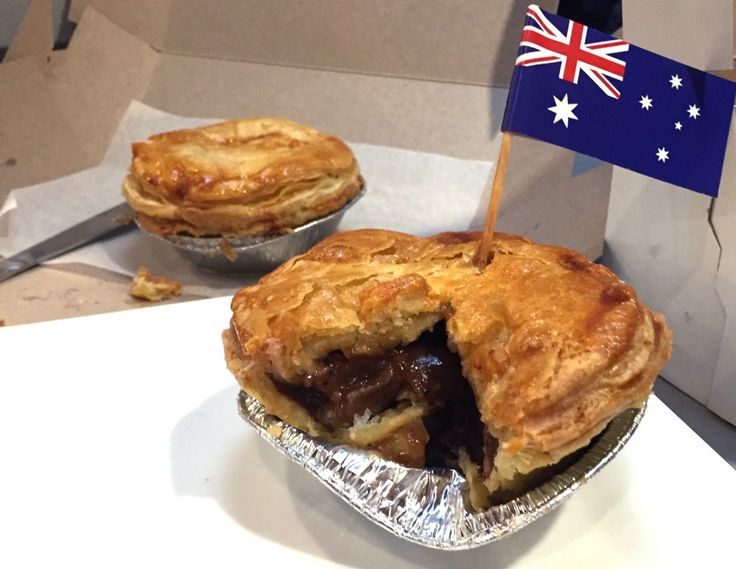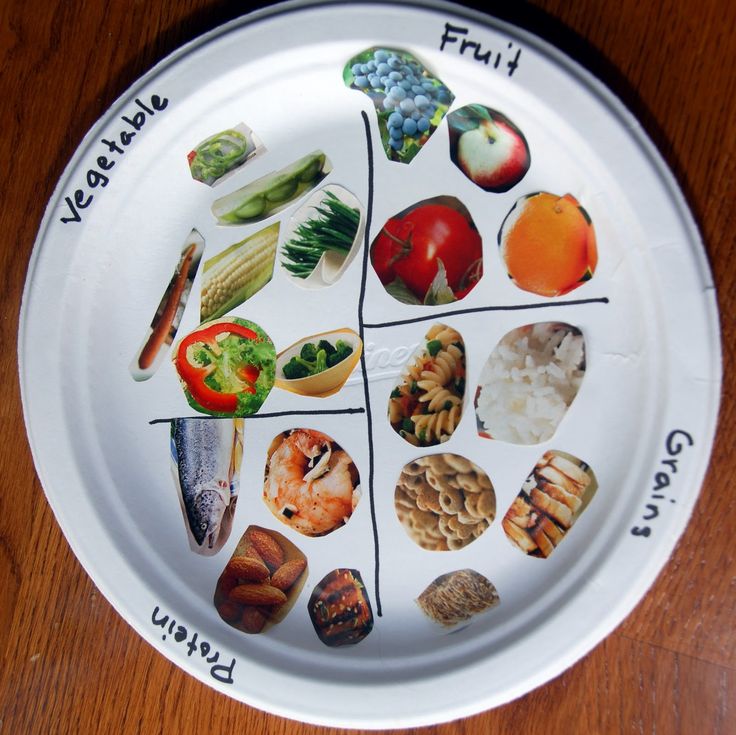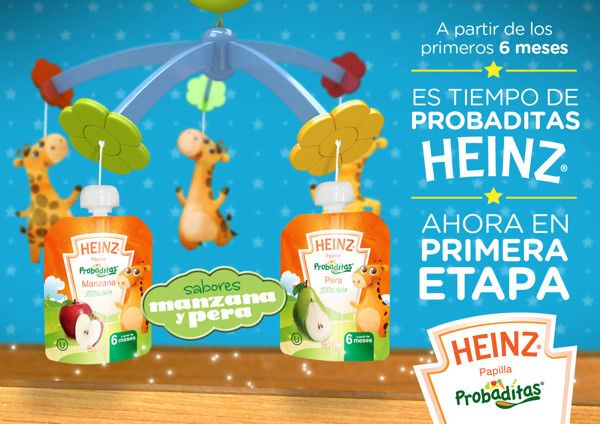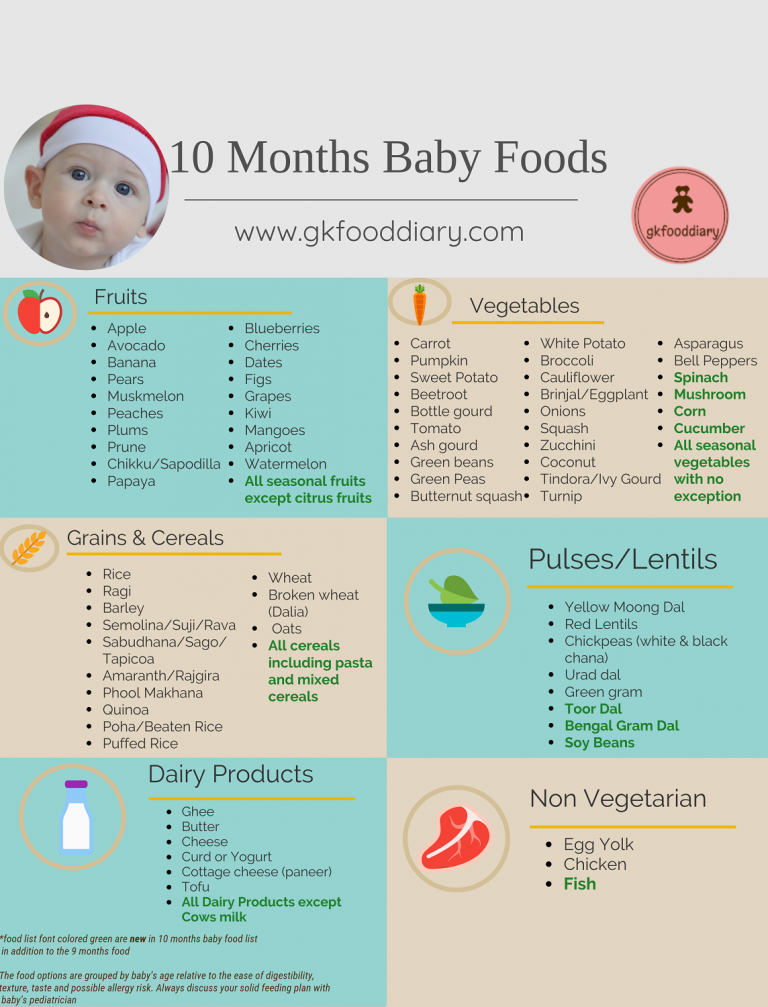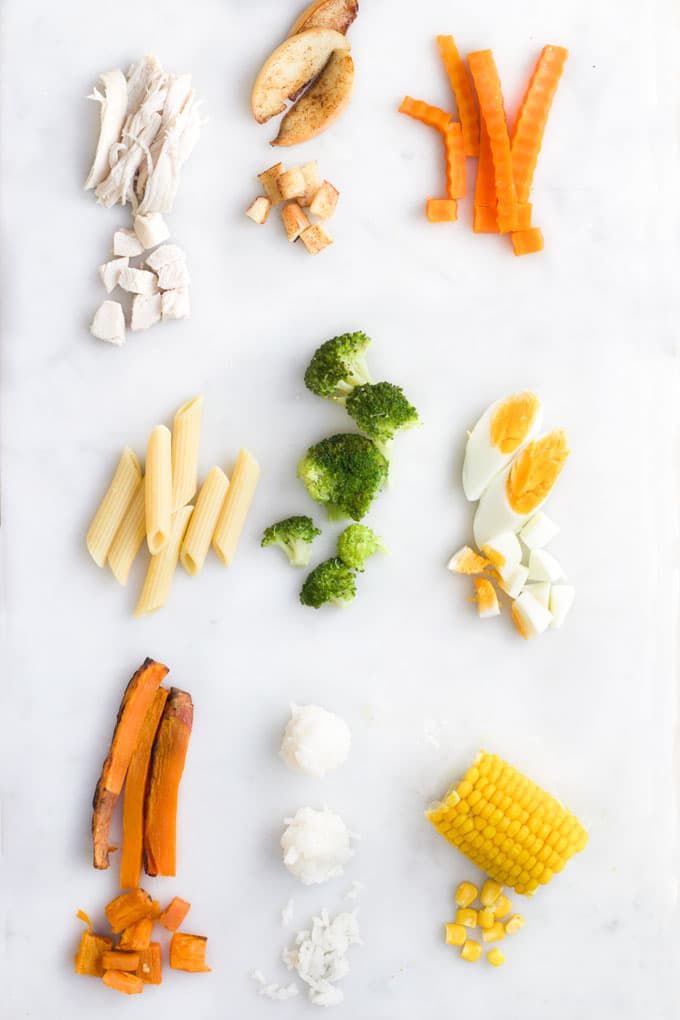Babies first foods australia
Introducing solids: why, when, what & how
Solid foods: why babies need them
As babies get older, they need solid food to get enough nutrients for growth and development. These essential nutrients include iron, zinc and others.
For the first 6 months of life, babies use iron stored in their bodies from when they were in the womb. They also get some iron from breastmilk and/or infant formula. But babies’ iron stores go down as they grow. By around 6 months, babies need to start having solid food.
Introducing solids is also important for helping babies learn to eat, giving them experience of new tastes and textures from a range of foods. It develops their teeth and jaws, and it builds other skills that they’ll need later for language development.
Signs that it’s time to introduce solids
Signs your baby is ready for solids include when your baby:
- has good head and neck control and can sit upright when supported
- shows an interest in food – for example, they look at what’s on your plate
- reaches out for your food
- opens their mouth when you offer them food on a spoon.
Most babies start to show these signs by around 6 months, although this can vary.
It’s recommended not to introduce solids before 4 months.
If your baby is nearing 7 months of age and hasn’t started solids, you might like to get some advice from your child and family health nurse or GP.
The best times of day to introduce solids
When you’re first introducing solids, it’s good to offer solids when you and your baby are both happy and relaxed.
This is often after a feed of breastmilk or formula. Babies will still have room in their tummies for a taste of new foods after a feed of breastmilk or formula. But if they’re really hungry before a feed, they just want the breastmilk or formula that they know satisfies their hunger.
As time passes, you’ll learn when your baby is hungry or full, not interested or tired.
Signs of hunger include your baby:
- getting excited when they see you getting their food ready
- leaning towards you while they’re sitting in the highchair
- opening their mouth as you’re about to feed them.

Signs your baby is no longer interested include:
- turning their head away
- losing interest or getting distracted
- pushing the spoon away
- clamping their mouth shut.
Your baby’s appetite can vary from day to day.
How much food to offer when introducing solids
When you’re first introducing solids, try offering 1-2 teaspoons of food once a day. At first, your baby might have only a small taste and probably won’t swallow much.
As your baby grows, you can increase the amount according to your baby’s appetite and signs.
By 12 months, your baby should be eating around 3 small meals a day, plus breastmilk or infant formula.
The right textures for first foods
When your baby is ready for solids, first foods might be smooth or finely mashed, depending on what baby likes. Over the next weeks and months, your baby can move on to roughly mashed or minced foods and then chopped foods.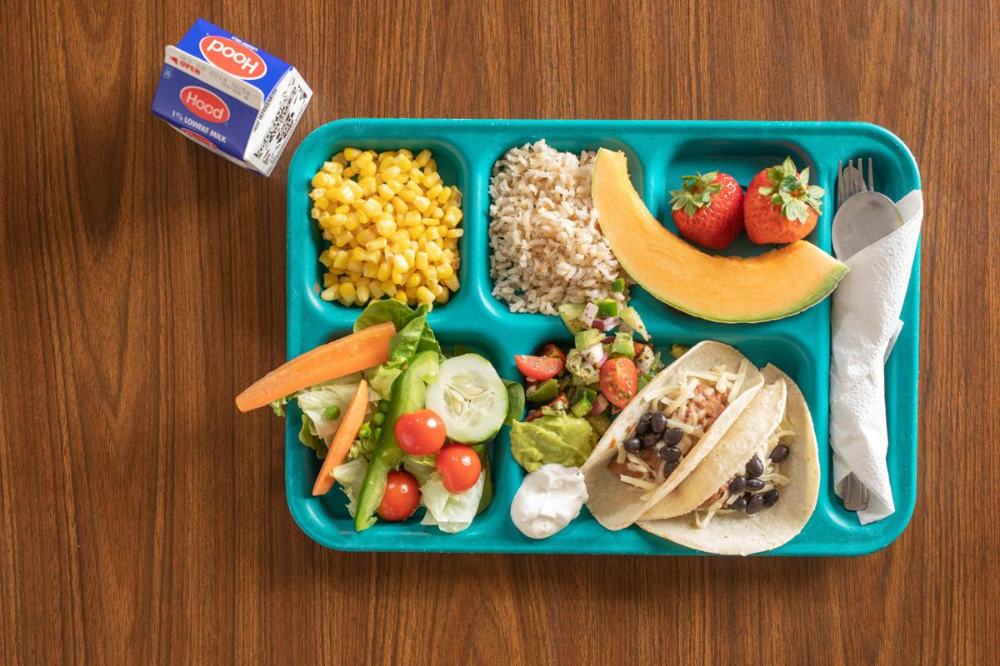 All foods should be very soft.
All foods should be very soft.
Your baby needs a variety of food textures. This helps your baby learn how to chew, and chewing helps with speech development and self-feeding. It also helps to prevent feeding difficulties as your baby develops. Babies can chew even before they get their first teeth.
By the time your baby is 12 months old, they should be eating the same foods that the rest of the family is eating. But you might still need to chop some foods into smaller pieces and cook vegetables until they’re soft.
To prevent choking, always supervise babies and young children while they’re eating solid food. Avoid nuts, take special care with pieces of meat and check fish for small bones, because these are choking hazards. And if your baby can move around, make sure baby is sitting down while they’re eating. If you sit with your baby while they’re eating, baby is less likely to move around.
Types of food to offer when introducing solids
All new foods are exciting for your baby.
The key is to include iron-rich foods of the right texture in your baby’s first foods. Iron-rich foods include:
- iron-fortified infant cereal
- minced meat, poultry and fish
- cooked tofu and legumes
- mashed, cooked egg (avoid raw or runny egg).
To these iron-rich foods, you can add other healthy foods of the right texture like:
- vegetables – for example, cooked potato, pumpkin, sweet potato, carrot, broccoli or spinach
- fruit – for example, banana, apple, pear, melon or avocado
- grains – for example, oats, bread, rice and pasta
- dairy foods – for example, yoghurt and full-fat cheese.
You can introduce any number of new foods at a time and in any order. When you offer your baby a variety of foods, they can try plenty of new tastes and get a range of nutrients.
Read our tips for introducing solid foods to learn how to get your baby interested in new foods and manage mealtime mess and play.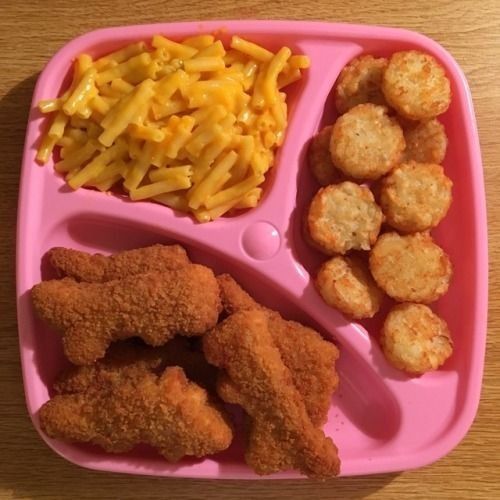
Breastmilk and infant formula while introducing solids
You should keep breastfeeding or using infant formula until at least 12 months.
When you start introducing solids, breastmilk or infant formula should still be the main source of your baby’s nutrition. Over the next few months, your baby will start having more solids and less milk or formula. The rate that this happens will vary.
By around 9 months, babies have generally developed enough chewing and swallowing skills to move from having milk before solids to having milk after solids.
Here are some signs that your baby is getting enough nutrition from both solids and breastmilk or formula during this time. Your baby:
- has plenty of wet nappies – at least 6-8 wet cloth nappies or 5 very wet disposables in 24 hours
- is alert and mostly happy after and between feeds
- is gaining weight at about the right rate – your child and family health nurse will weigh your baby at your regular check-ups.
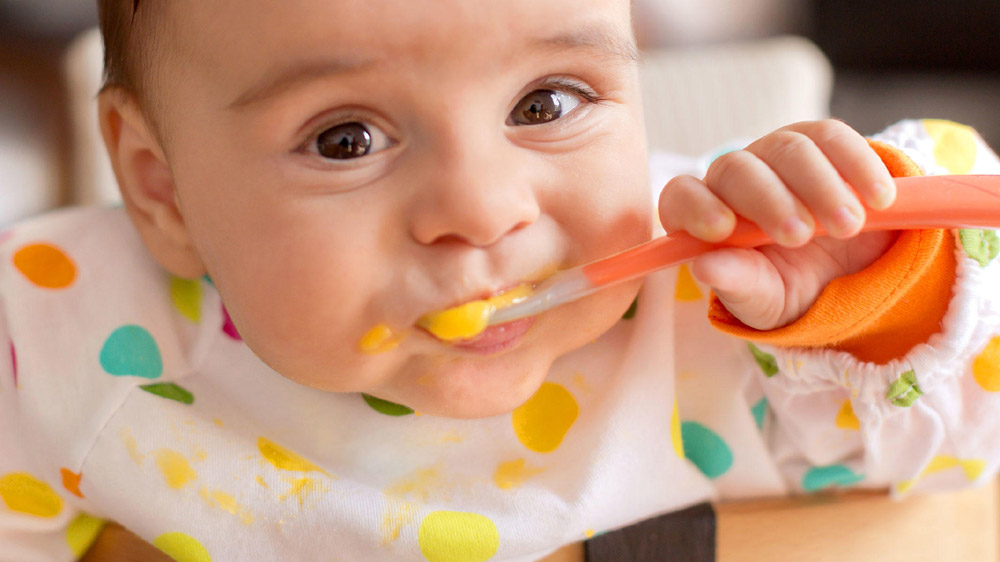
From 12 months onwards, solids should be the main source of your baby’s nutrition. Your baby doesn’t need infant formula after 12 months, but you can keep breastfeeding for as long as you and your baby like.
If solid food replaces breastmilk and/or infant formula too quickly, babies can miss out on important nutrition. If you have any concerns about your baby’s feeds or weight, talk to your midwife, child and family health nurse, lactation consultant or GP.
Introducing water
Once your baby has reached 6 months, you can start to offer baby cooled, boiled water in a cup at mealtimes and at other times during the day. This is so your baby can practise drinking from a cup, but baby still doesn’t really need fluids other than breastmilk or formula at this age.
Once your baby has reached 12 months, you can offer fresh tap water without boiling it.
Foods and drinks to avoid while introducing solids
There are some foods to avoid until your baby is a certain age:
- Honey until 12 months – this is to avoid the risk of infant botulism.

- Raw or runny eggs and foods containing raw eggs like home-made mayonnaise until 12 months – bacteria in raw eggs can be harmful to babies.
- Reduced-fat dairy until 2 years – babies need full-fat dairy for growth.
- Whole nuts and similar hard foods until 3 years – these are choking hazards.
There are some drinks to avoid until your baby is a certain age:
- pasteurised full-fat cow’s milk as a main drink until 12 months
- dairy alternatives like soy, goat’s, sheep’s, rice, oat, almond and coconut milk until 2 years, unless your GP or child and family health nurse has recommended these for a particular reason
- unpasteurised milks at all ages
- tea, coffee or sugar-sweetened drinks at all ages
- fruit juice – this should be limited at all ages (whole fruits are better because they have fibre and help babies develop chewing and feeding skills).
Your baby doesn’t need added salt or sugar.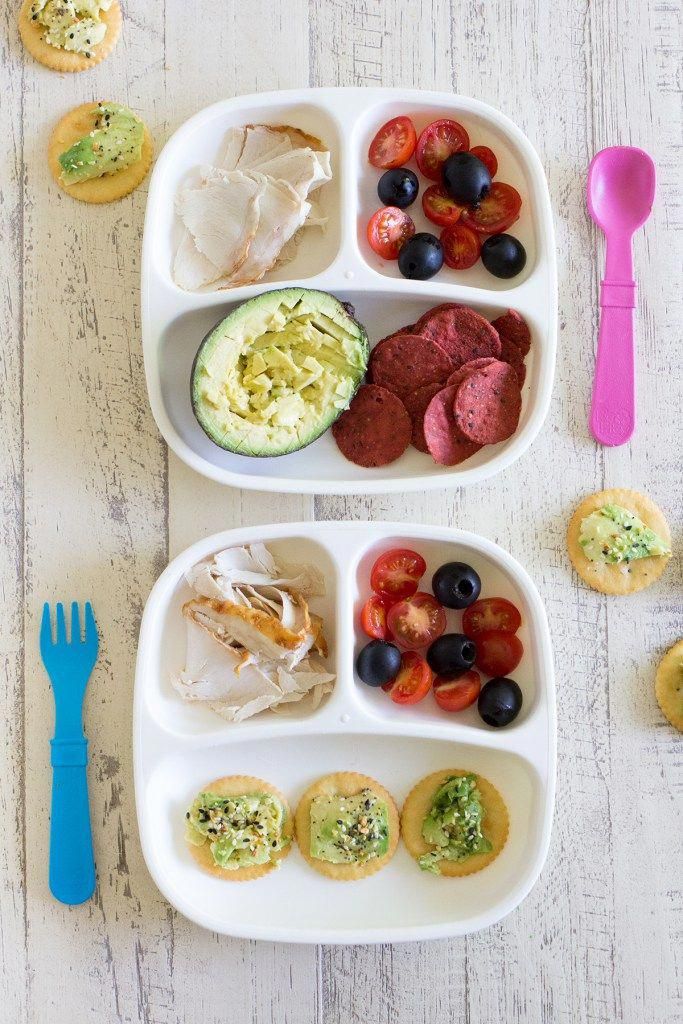 Processed or packaged foods with high levels of fat, sugar and/or salt aren’t good for babies and children. These foods include cakes, biscuits, chips and fried foods.
Processed or packaged foods with high levels of fat, sugar and/or salt aren’t good for babies and children. These foods include cakes, biscuits, chips and fried foods.
Food allergy and introducing solids
Introducing allergenic foods early can reduce the risk of your child developing food allergy. Allergenic foods are foods that might cause allergies.
All babies, including babies with a high allergy risk, should try solid foods that might cause allergies from around 6 months of age. These foods include well-cooked egg, peanut butter and other nut butters, wheat (from wheat-based breads, cereals and pasta) and cow’s milk (but not as a main drink).
Once you’ve introduced an allergenic food, it’s a good idea to regularly include it in your baby’s diet.
It’s a good idea to get advice from your GP, child and family health nurse, dietitian, paediatrician or allergy and immunology specialist for the following reasons:
- Your baby already has a food allergy.
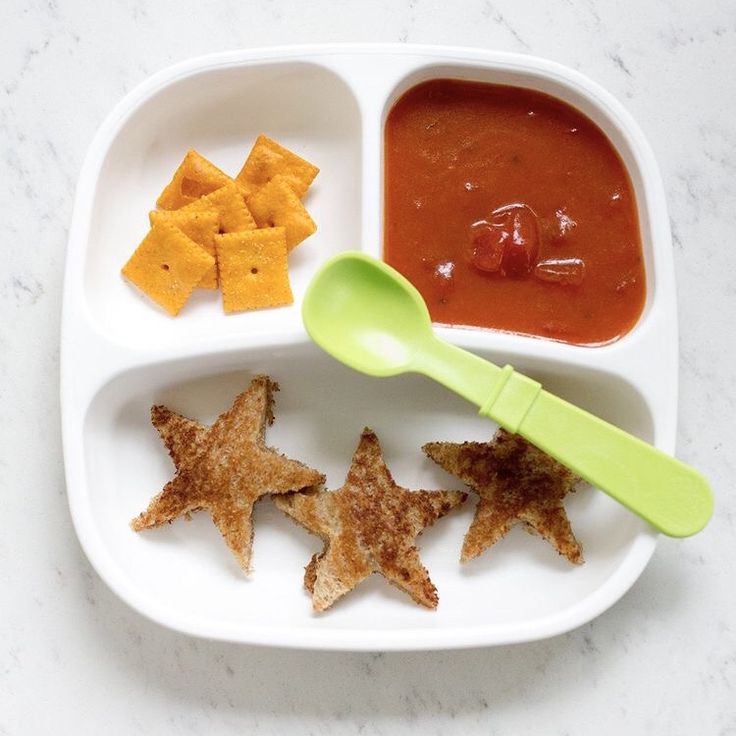
- Your baby has severe eczema.
- Your family has a history of food allergy and you’re concerned about starting solids.
- You’re worried about reactions to foods.
Baby’s first foods – Healthy eating from around 6 months
Baby’s first foods – Healthy eating from around 6 months
Starting solid food is exciting! It’s not just about eating healthy food – your baby is learning how to eat and to enjoy food, and to experience new tastes and textures. These early days will shape her attitudes to food and eating.
Getting started
At around 6 months, your baby needs more iron and other nutrients than he can get from breastmilk or infant formula.
- Starting solid food before 4 months can increase the risk of allergies.
- Waiting too long after 6 months means your baby may miss out on important nutrients he needs for growing and developing, and may increase the risk of allergies if some foods are avoided.
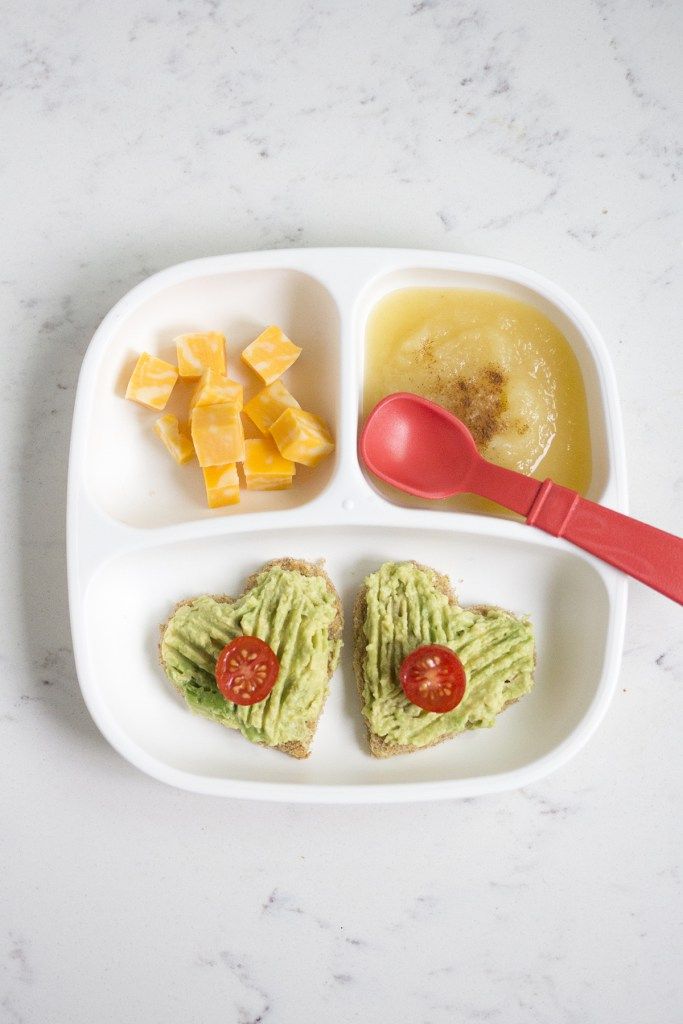
- Keep breastfeeding while introducing solids.
It’s time to introduce solid food if your baby:
- is around 6 months old
- has good head and neck control, and can sit upright when you support him
- seems interested in food – reaching out for food when you’re eating
- opens his mouth when you offer him food
- takes pureed food from a spoon without pushing it out of his mouth with his tongue
- looks for more food after a breastfeed or formula feed.
Every baby is different
If you are having problems or if you aren’t sure if your baby is ready for solid foods, talk to your child health nurse or doctor.
How do i start?
Pick a time when you and your baby are happy and relaxed.
- Your baby (and you) will enjoy it more if sitting comfortably and supported, and not too tired or hungry.
- Use a soft, plastic spoon.
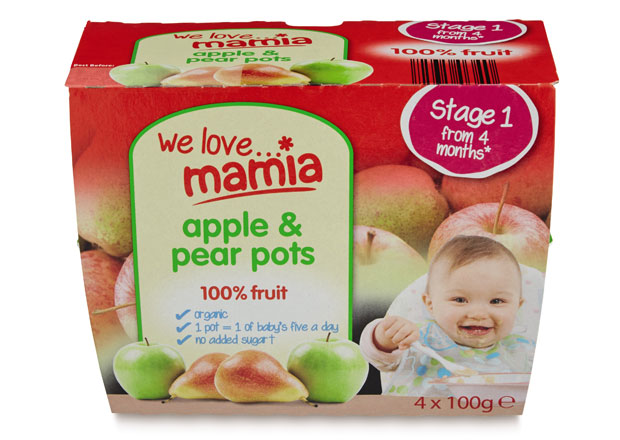
- Start with small tastes of food after a breastfeed or formula feed.
Your baby is probably hungry when she:
- is excited when she sees food
- leans forward towards you when sitting
- opens her mouth, ready to be fed.
Your baby is probably not interested in eating when she:
- turns her head away
- is distracted and not interested
- pushes the spoon away
- firmly closes her mouth.
Preparing baby's food
Cook vegetables, fruit, meat and chicken or meat alternatives in a little water or baby’s milk.
Don’t add sugar, salt or processed seasoning.
To puree foods, use a blender or mash the food through a sieve.
Tip
Store homemade food in ice cube trays (with a cover), in small sealed containers or in bags in the fridge or freezer.
What food?
Start with foods that are high in iron:
- iron-enriched baby cereals
- pureed meat or chicken
- cooked tofu
- legumes (beans, peas and lentils).

After this, you can introduce new food in any order, and more than 1 new food at a time. It’s OK to mix different food together.
Try to give your baby homemade food if you can.
This is also a good time to think about your own diet – and make some healthy changes.
Offer a variety of foods from the Five Food Groups:
- vegetables/legumes/beans
- fruit
- grain (cereal) foods
- lean meat/poultry/fish/eggs/tofu
- milk/yoghurt/cheese
Find out more about the Five Food Groups (external site).
Dairy food
Full cream cow’s milk, cheese and yoghurts are best until your baby turns 2, then you can offer low fat varieties.
Vegetarian diet
If you are feeding your child a vegetarian diet, talk to your nurse, doctor or a dietitian to make sure they are getting all the nutrients they need.
How much food and when?
- Once a day, start with a teaspoon of iron-rich food after a breastfeed or formula feed.
 Mix the food with your baby’s milk or boiled water into a smooth paste.
Mix the food with your baby’s milk or boiled water into a smooth paste. - Introduce a variety of foods, moving from pureed→smooth→mashed→ soft pieces.
- Gradually increase the amount from 1 or 2 teaspoons up to 2 or 3 tablespoons, according to your baby’s appetite.
- Start with 1 meal and gradually increase the amount. By 8 months, your baby should be having 3 meals.
- Once your baby is eating a variety of foods, offer food before your baby breastfeeds.
Babies know when they are full or hungry, so it is important for you to recognise your baby’s hunger and full ‘signs’.
What drinks?
- Breastmilk for the first year, and as long as you want after that.
- Lots of cooled, boiled tap water from 6 months (from a cup).
- If baby has formula, stop using it at 12 months.
- Full cream cow’s milk from 12 months (from a cup).
Start with a sippy cup with a lid, but work towards no lid as soon as possible.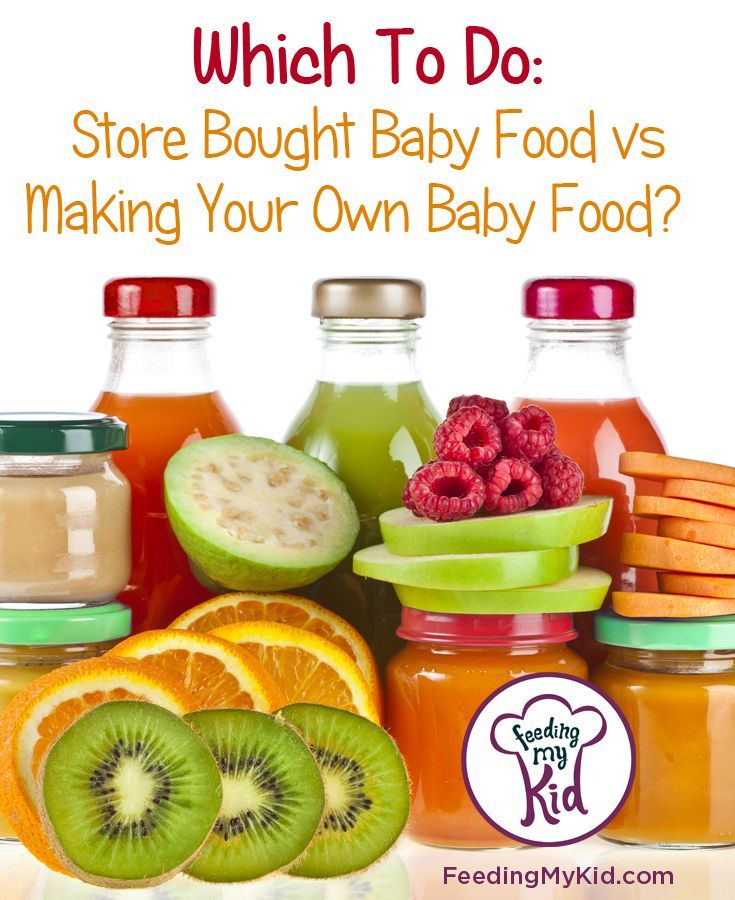 Avoid cups with valves.
Avoid cups with valves.
Continued use of bottles is linked to tooth decay.
Textures
It is important to offer lots of different tastes and textures, suitable for your baby’s stage of development.
- Start off with smooth or pureed foods.
- Once your baby is used to that texture, quickly move on to mashed, followed by lumpier foods.
- At around 8 months, your baby will be ready to eat diced, chopped, soft strips and finger foods.
Textured foods help your baby to chew. This helps develop the muscles used for talking.
- Don’t worry if your baby has no or few teeth. He can chew mashed and finely diced food with his gums.
- Don’t worry if your baby ‘gags’ – it’s a natural reflex to avoid choking. It’s also a normal response to a new texture.
- Offer foods your baby can pick up. As your baby develops, he will start wanting to feed himself.
- Don’t worry if your baby spits out food. Learning to eat takes time and patience.
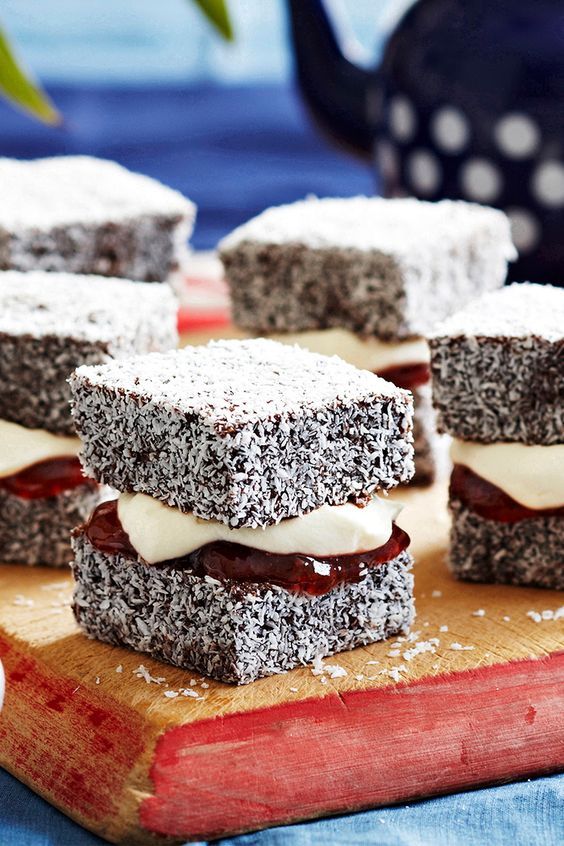 If your baby doesn’t like a type of food, try it again some other time. You might have to offer it many times before your baby accepts the new taste or texture.
If your baby doesn’t like a type of food, try it again some other time. You might have to offer it many times before your baby accepts the new taste or texture.
Tips
- Be relaxed.
- Talk to your baby about the food he’s eating. Look into his eyes, and make sure there are no distractions.
- Turn off the TV and other screens.
- Sit your baby with the family at meal times so he can watch, learn and join in.
- It will be messy!
- Put newspaper or plastic under the high chair.
- Be prepared for a change in your baby’s poo!
- Different foods create different coloured poo.
Commercial baby food
- Commercial baby food (in a jar or a pouch) can be handy when travelling or in an emergency.
- It’s not a good idea to use them a lot – your baby can get used to the taste and smooth texture of these foods.
- With home-cooked food, you are giving your baby lots of variety in taste and texture, and it’s a lot cheaper.
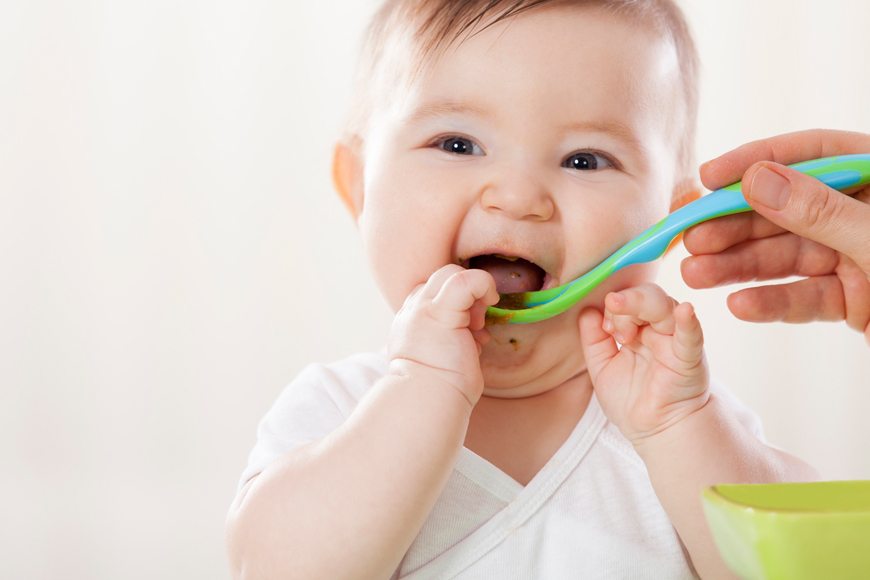
What not to give your baby
Honey
The bacteria in honey can make babies sick – don’t give her honey until she is 1 year old.
Raw eggs and raw meat
The bacteria in raw eggs and meat can make babies sick. Cooked eggs and meat are OK.
Salt and sugar
Your baby doesn’t need salt, sugar, or processed flavours added to her food. She has sensitive tastebuds, so will enjoy her food just as it is.
These drinks:
- cow’s milk/goat’s milk (at least until she’s 1 year old)
- soy drinks (unless under doctor’s advice)
- alternative ‘milk’ such as rice, oat, coconut and almond milk
- follow-on toddler formula (these are not necessary)
- fruit juice – these have lots of sugar and can cause tooth decay and reduce your baby’s appetite. They can also cause an upset tummy or runny poos.
- soft drinks, cordials, flavoured milk – these have lots of sugar, and can cause
- obesity and tooth decay
- energy drinks – these contain guarana and caffeine which are not safe for babies or children
- tea, herbal tea – the tannin in tea can affect how your baby absorbs iron
- coffee, cola – the caffeine in coffee and cola is not safe for babies or children.

Feeding your baby: the first 12 months
The first 6 months
- breastmilk
- commercial infant formula.
At about 6 months
- start with iron-rich foods
- try new foods in any order
- smooth puree → mashed foods (mash with a fork)
- cooled boiled tap water in a cup
- start with a teaspoon after their milk feed
- increase when your baby is ready to eat more
At about 8 months
- thicker/chunkier food → finely chopped food → finger foods
- babies like to feed themselves
- about 3 meals a day
- cooled boiled tap water in a cup
At 9 to 12 months
- lots of different foods and textures
- sit with the family to eat family foods (baby will like to self-feed)
- cooled boiled tap water in a cup
- about 5 small meals a day
- learning to eat is messy!
Where to get help
Local community or child health nurse
- See inside your baby's purple All About Me book
- Look in the service finder for child health centres
- Visit your nearest child health centre
Local family doctor
Dietitians Association of Australia
- Visit the Dietitians Association of Australia website (external site)
- Look for your local dietitian in the Yellow Pages
- Accredited Practising Dietitian (APD) Hotline – Freecall 1800 812 942 (free from land line only)
Australasian Society of Clinical Immunology and Allergy (ASCIA)
- Visit the ASCIA website (external site)
Ngala Parenting Line
- 8.
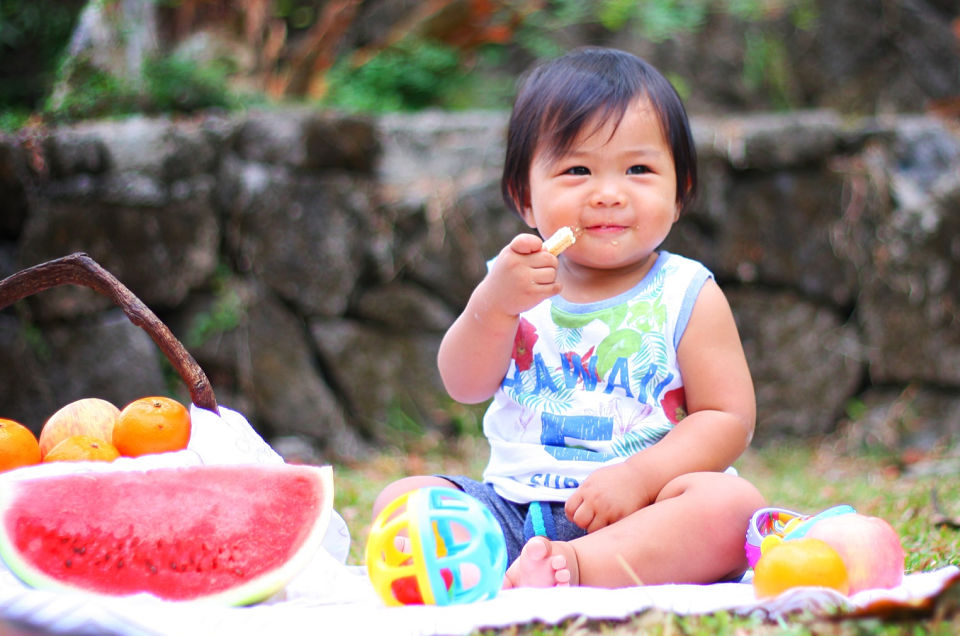 00am – 8.00pm 7 days a week
00am – 8.00pm 7 days a week - Phone: (08) 9368 9368
- Outside metro area – Free call 1800 111 546 (free from land line only)
- Visit the Ngala website (external site)
Raising Children Network
- Visit the Raising Children Network website (external site)
- Visit healthdirect (external site) or call 1800 022 222
Prevent choking
Always watch carefully when your baby is eating.
- Don’t let your baby move, crawl or walk with food in his mouth.
- Babies and young children can choke on food that is small, hard, round or sticky.
- Remove small bones and gristle from meat, chicken and fish.
- Remove the skin from sausages. (Sausages are not recommended for babies as they are high in salt and fat.)
- Cook, then grate or mash all hard fruit and vegetables like apples, carrots and beans.
Food safety
Babies can easily get very sick from food poisoning.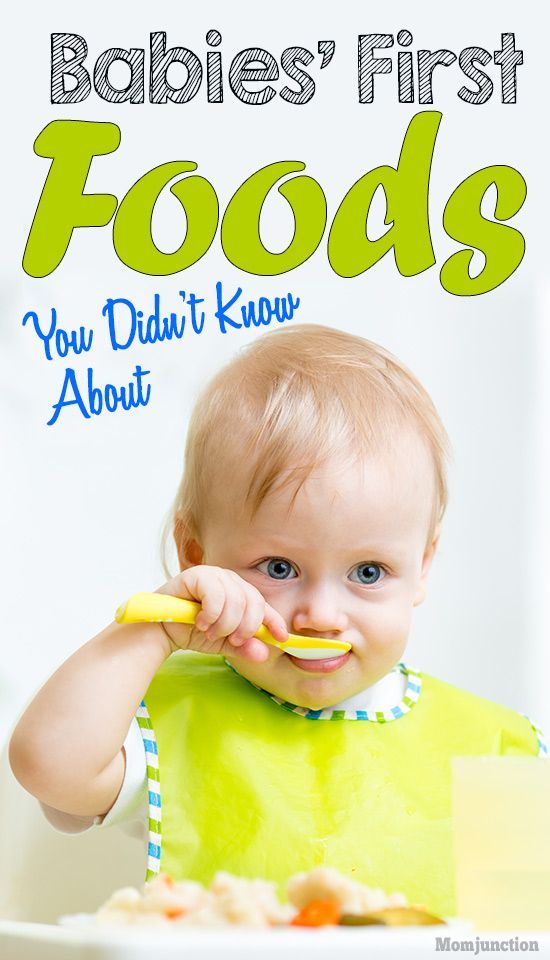 It is important to keep your baby’s food safe.
It is important to keep your baby’s food safe.
- Wash your hands before preparing food.
- Wash your baby’s hands before eating.
- Clean utensils and work surfaces.
- Use separate chopping boards and utensils when preparing raw food and ready-to-eat foods.
- Use clean spoons, cups, bowls and plates.
- Wash all fruit and vegetables.
- Store prepared food in a sealed container in the fridge or freezer.
- Always store raw meat in containers or wrap in the BOTTOM of the fridge so raw meat juices can’t drip onto other foods.
- Re-heat pre-prepared food really well, and then cool it down, before giving it to your baby.
- Never re-heat food more than once.
- Never keep food that your baby has dribbled on.
- Keep pets away from food and food preparation surfaces.
Allergies
Please talk to your doctor if you are worried about allergies, particularly if your baby already has severe eczema or food allergy, or other members of your families have allergies.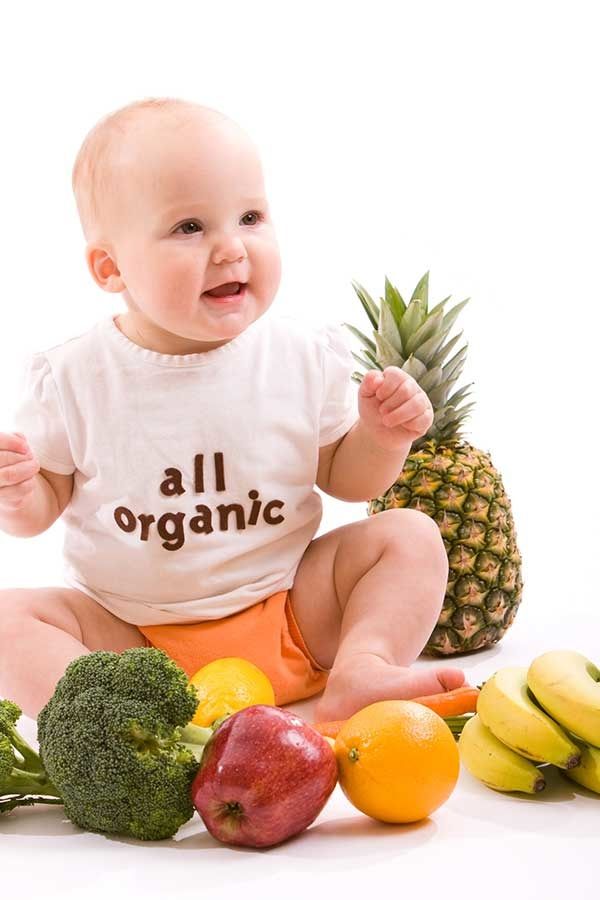
Even if some family members have food allergies, you don’t need to delay starting solids foods, or not offer some types of foods to prevent allergies.
In fact, delaying or avoiding some foods can increase the risk of your baby developing an allergy.
From 6 months, you can offer your baby cooked egg, smooth nut pastes (including peanuts and tree nuts), wheat, cow’s milk (in cooking), sesame, fish and shell fish at regular intervals.
Some food can irritate the skin around the mouth or cheeks as your baby’s skin is very sensitive. This includes citrus, tomatoes and berries – this is not a food allergy.
Some babies are allergic to some foods. Most symptoms of food allergy are mild to moderate.
Watch for:
- swelling of face, eyes or lips hives or welts (red lumps on the skin)
- vomiting and diarrhoea
- rashes or redness of the skin.
Call an ambulance
call an ambulance if your baby has these severe reactions to any food:
- difficult or noisy breathing
- swelling of the tongue
- pale skin and floppy.

Last reviewed: 31-05-2019
Acknowledgements
Child and Adolescent Health Service – Community Health (CAHS CH)
This publication is provided for education and information purposes only. It is not a substitute for professional medical care. Information about a therapy, service, product or treatment does not imply endorsement and is not intended to replace advice from your healthcare professional. Readers should note that over time currency and completeness of the information may change. All users should seek advice from a qualified healthcare professional for a diagnosis and answers to their medical questions.
Rules for the introduction of the first complementary foods in different countries
- American complementary foods
- German food
- Italian food
- Australian food
- Chinese food
- Comments
One of the most "sick" questions for mothers of babies - when and how to start complementary foods while breastfeeding. And how is the situation with complementary foods in other countries?
And how is the situation with complementary foods in other countries?
To each his own
Each country has its own rules for the introduction of the first complementary foods, approved by doctors. The nutrition of babies is determined by the availability of certain products (seasonal vegetables, fruits, fish, seafood), and national culinary traditions, and ideas about the usefulness of individual products.
American Complementary Food
Traditionally, the first dish of complementary food for an infant in Americans is porridge made from one grain - rice or oatmeal. Porridge must be enriched with iron, because by 4-6 months the child begins to experience a lack of this substance. Porridge is diluted with milk formula, mother's milk or water.
The next step is vegetable or fruit puree. It doesn’t matter where you start: carrots, pears, plums, sweet potatoes, avocados, bananas, and more are suitable as the first product. Many parents, and even some doctors, believe that vegetables should be introduced into the diet before fruits, because if the child first tries sweet fruits, then he will refuse vegetables. But actually it is not. Any child is already born into the world with a preference for sweets, so whether he will like vegetables does not depend on the order in which new foods are introduced.
But actually it is not. Any child is already born into the world with a preference for sweets, so whether he will like vegetables does not depend on the order in which new foods are introduced.
Vegetables and fruits are followed by meat. It is not worth putting off acquaintance with meat for a long time, because it is rich in iron, which the baby needs so much now. The rules for introducing a new product are the same as in Russian pediatric practice. For the first time, the baby is given a teaspoon of a new dish to try and gradually increase its amount. Each new product is introduced no more than in 2-3 days. In this case, it is important to monitor whether the baby has an allergic reaction in the form of diarrhea or a rash. Otherwise, the product will have to be canceled and consult a pediatrician.
According to the American Academy of Pediatrics, a baby is ready to start weaning if:
1. baby is able to sit (with support) and hold his head well;
2. birth weight has increased by at least 2 times, and the baby weighs at least 6 kg;
birth weight has increased by at least 2 times, and the baby weighs at least 6 kg;
3. the baby expresses a desire to try the adults' food;
4. baby is able to take food in his mouth and swallow it.
A baby usually starts meeting these requirements between 4 and 6 months of age.
German complementary foods
German doctors believe that children are ready for their first complementary foods as early as the fifth month of life. Their digestive system is already mature enough to absorb other products than mother's milk and formula. The latest time for the introduction of complementary foods to a child is the seventh month: at this age, the baby is already very active, moves a lot, and milk alone is no longer enough for him.
What is the best way to start weaning? The Germans believe that carrot puree should be the very first food for a baby, because it tastes slightly sweet and reminds a child of mother's milk.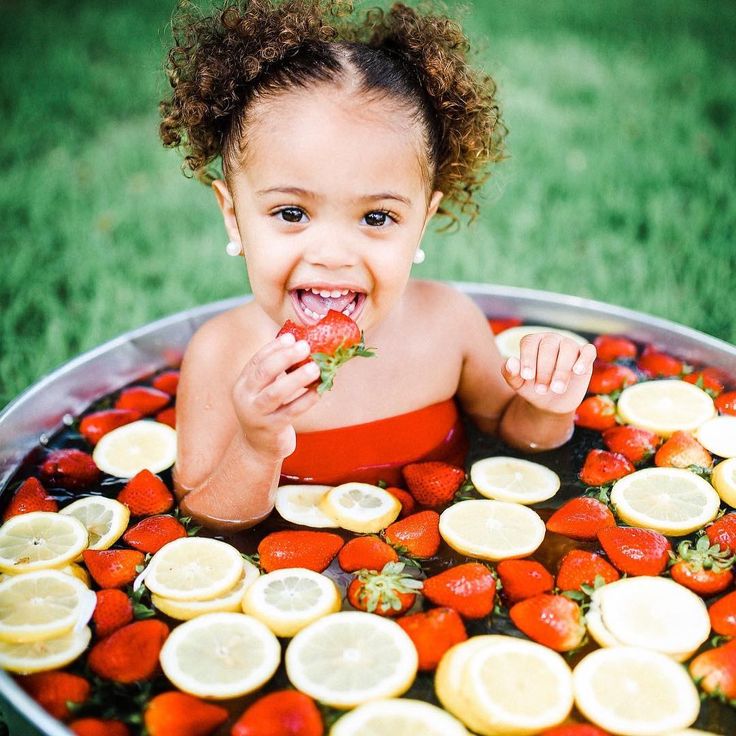 According to German doctors, this puree does not often give an allergic reaction. But if, nevertheless, the baby has digestive problems, then it is better to use other vegetables as an alternative for the first acquaintance - zucchini, kohlrabi, spinach, pumpkin.
According to German doctors, this puree does not often give an allergic reaction. But if, nevertheless, the baby has digestive problems, then it is better to use other vegetables as an alternative for the first acquaintance - zucchini, kohlrabi, spinach, pumpkin.
After 2-3 days, when the baby gets used to eating from a spoon, you can try adding a second vegetable, such as potatoes, and after another 5 days, mashed meat (lean pork, beef, lamb, poultry). It is important to introduce each new product one at a time and wait a few days until the baby gets used to the new taste.
Milk porridge is used as a second food for a child, and mashed vegetables and cereals as a third.
The Germans advise in the first year of life to give the child a little fruits, vegetables, cereals, different types of meat and poultry, so that he gets acquainted with the variety of tastes. Then the baby will be more willing to eat different dishes when he gets older.
Advice from German doctors: when you introduce a new product to a baby, be sure to try it in front of the child yourself and try to show him with all your appearance that what you eat is just yummy!
Carrot soup
Carrots: 150-200g
Wash, peel, cut into slices, boil the carrots. Throw the finished carrots in a colander, make a puree out of it with a blender. Put the puree back into the carrot broth, add sugar and spices, and boil. This soup can be given to a child every few days.
Throw the finished carrots in a colander, make a puree out of it with a blender. Put the puree back into the carrot broth, add sugar and spices, and boil. This soup can be given to a child every few days.
Italian Complementary Food
Italians start introducing complementary foods for infants from 4 to 6 months. The individual time for the introduction of the first complementary foods is determined by the doctor observing the baby. National food traditions also have an impact on the infant diet. The first acquaintance with "adult" food in Italy begins with vegetable broth. Initially, the broth is prepared from potatoes, carrots and zucchini, as from the least allergenic vegetables. They are boiled for a long time, as a result of which the beneficial substances pass into the input, then the broth is filtered and given to the baby (several teaspoons). You don't need to salt the broth. A few days later, the child is given a taste of the vegetable dish itself, while the vegetables are ground or chopped in a blender.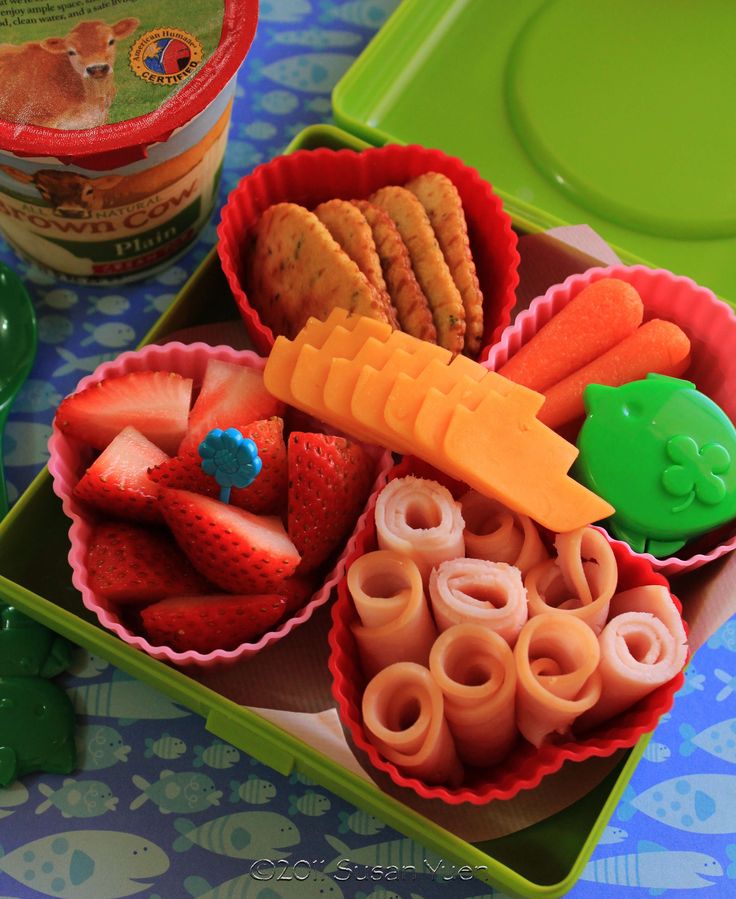 After the first vegetables comes the turn of a dish worthy of a real gourmet. Porridge (rice, corn, wheat, multi-cereal) is prepared on vegetable broth and a coffee spoon of parmesan cheese grated on a fine grater and a coffee spoon of olive oil are added to it. And a week later, the baby is offered a more complex dish - porridge in vegetable broth with the addition of mashed vegetables and a small amount of mashed meat.
After the first vegetables comes the turn of a dish worthy of a real gourmet. Porridge (rice, corn, wheat, multi-cereal) is prepared on vegetable broth and a coffee spoon of parmesan cheese grated on a fine grater and a coffee spoon of olive oil are added to it. And a week later, the baby is offered a more complex dish - porridge in vegetable broth with the addition of mashed vegetables and a small amount of mashed meat.
Meat puree in Italy is sold in jars (as in Russia), so Italian mothers don't have to suffer with its preparation. By the way, the acquaintance of children with meat in Italy begins with the so-called white meat - chicken, turkey, lamb, rabbit meat. At the same time, the assortment of vegetables is gradually expanding: after zucchini, potatoes and carrots comes the turn of pumpkin, celery, beans, peas, spinach, beets, artichokes. Every week, one new vegetable is introduced. Italians try to give babies only seasonal products, since the climate allows them to provide children with a variety of such vegetables in the diet.
Complementary foods in India
Hindus believe that little boys are less healthy than girls, so girls get food from an adult table from 6 months, while boys only from 9 months.
Australian Complementary Foods
A baby should not be given anything other than mother's milk or formula until the age of 6 months - this is the opinion of Australian doctors. According to their observations, for normal development and growth, the baby does not need any complementary foods in the first six months of life. Moreover, Australian doctors believe that the early introduction of complementary foods can only harm the child, because if the baby receives food other than mother's milk, then the amount of milk produced by the mother will decrease. Another reason for refusing early complementary foods is the fear of a food infection that a child can catch if parents violate the rules for preparing and storing baby food. And mother's milk, as you know, is always ready for use and does not spoil. If in the Russian schedule for the introduction of complementary foods for babies, fruit juice is recommended from 6 months, then Australian nutritionists do not see the need for drinking fruit juice in the first year of life at all. A child can get valuable nutrients from fresh fruits. And as for fruit juices, they have too much sugar, and this is bad for newly erupted teeth. Australian doctors remind that in the first months of acquaintance with complementary foods, it does not matter that the child does not eat so much. Let it be just one or two tablespoons of mashed potatoes or porridge. The main food in the first year of life is breast milk or milk formula. The goal of parents at this stage is to teach the baby to eat different foods. Therefore, you need to monitor the behavior of the crumbs while eating: if he turns his head away, do not insist. Everything has its time.
If in the Russian schedule for the introduction of complementary foods for babies, fruit juice is recommended from 6 months, then Australian nutritionists do not see the need for drinking fruit juice in the first year of life at all. A child can get valuable nutrients from fresh fruits. And as for fruit juices, they have too much sugar, and this is bad for newly erupted teeth. Australian doctors remind that in the first months of acquaintance with complementary foods, it does not matter that the child does not eat so much. Let it be just one or two tablespoons of mashed potatoes or porridge. The main food in the first year of life is breast milk or milk formula. The goal of parents at this stage is to teach the baby to eat different foods. Therefore, you need to monitor the behavior of the crumbs while eating: if he turns his head away, do not insist. Everything has its time.
In all countries it is recommended to introduce a new product gradually
Chinese complementary foods
In China, doctors recommend starting complementary foods at 4 months of age.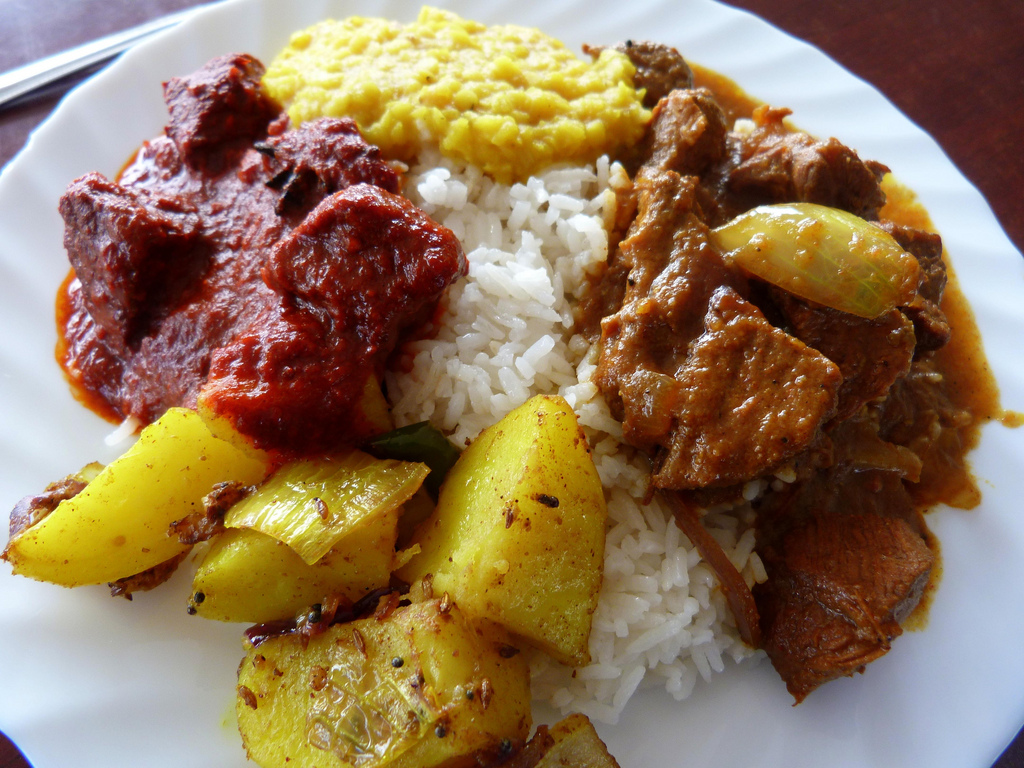 Among the first meals of feeding a baby, there are those that are familiar to Europeans, for example, apple or banana puree, rice porridge. But there are some that seem exotic to us, such as lotus root or tofu. Chinese pediatricians consider an egg to be a very useful product for brain development, for the formation of muscles and bones. The yolk of an egg, just like in Russia, is usually added to porridge. Start with 1/4 yolk. In China, in addition to meat, they start giving fish to children quite early - carp, herring, eel, and they prefer to steam the fish. They offer kids not only fish, but also seafood.
Among the first meals of feeding a baby, there are those that are familiar to Europeans, for example, apple or banana puree, rice porridge. But there are some that seem exotic to us, such as lotus root or tofu. Chinese pediatricians consider an egg to be a very useful product for brain development, for the formation of muscles and bones. The yolk of an egg, just like in Russia, is usually added to porridge. Start with 1/4 yolk. In China, in addition to meat, they start giving fish to children quite early - carp, herring, eel, and they prefer to steam the fish. They offer kids not only fish, but also seafood.
Banana-potato paste
Potato: 1pc.
Banana: 1/2 pc.
Egg yolk: 1/4 pc.
Milk or milk formula
Steam potatoes and mash them. Mash the banana. Mix banana and mashed potatoes, add ¼ boiled egg yolk. Add a few tablespoons of mother's milk or formula.
Whatever feeding scheme you choose for your baby, our baby food catalog will help you buy baby food.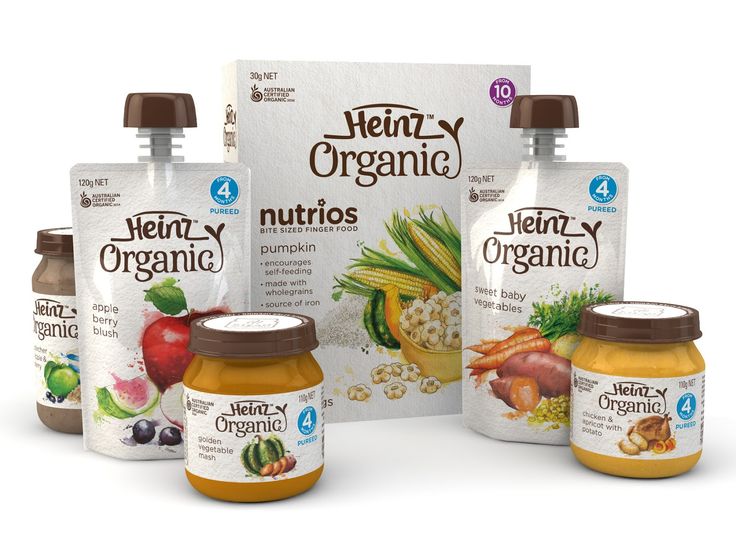
at what age to introduce with breastfeeding and artificial feeding, how to cook at home
when to introduce the first complementary foods
Today there are no hard and fast rules and deadlines for the introduction of complementary foods. Parents should first of all focus on the signs of the child's readiness for complementary foods. Here is what pediatrician, candidate of medical sciences Anna Levadnaya advises to pay attention to , the author of a blog about pediatrics and not only on Instagram.
The child holds his head confidently.
- Can sit with support, meaning it can be placed in a high chair or placed on an adult's lap.
- The kid shows an active food interest: he is interested in food, he watches what adults eat.
- Breastfeeding or formula feeding is well organized and does not cause any problems.
- The child can put his hand to his mouth, puts various objects in his mouth, such as toys.
 In this case, the baby chews or champs.
In this case, the baby chews or champs.
As a rule, all these signs appear in the period from 5.5 to 7.5 - 8 months, but most often around 6 months. All babies develop differently, and one baby may be ready to try his first puree or porridge as early as 5 months, and another at 6 or 7 months will refuse the new food you offer.
What complementary foods a child needs in the first months
And here again, there are no strict recommendations and rules. On the contrary, many experts agree that it doesn’t matter which dish you start complementary foods with, the most important thing is to provide the right nutritional interest. In this case, the child will eat all the foods that you offer him.
In Russia, it is customary to focus on the following scheme for the introduction of complementary foods. The first to introduce cereals or vegetables, depending on the weight of the child. As a rule, vegetables are first, then cereals, then meat, then fruits, then cottage cheese.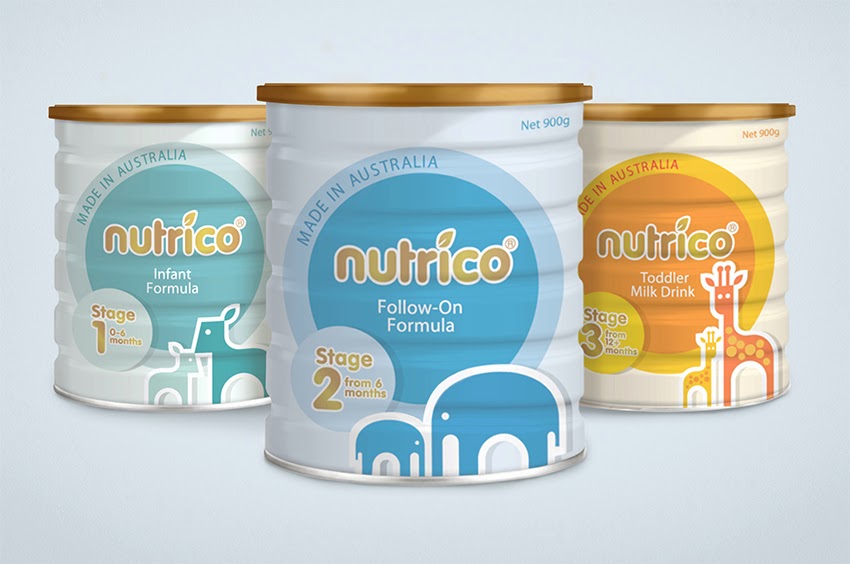 In some US states, for example, on the contrary, it is recommended to start complementary foods with meat. But the general message of the recommendations is to maximize the variety of tastes and textures in the first year of life. From vegetables in the first months, you can offer zucchini, cauliflower, broccoli, pumpkin, carrots, potatoes. Of the cereals, gluten-free are the first to be introduced: rice, buckwheat, corn. From fruits - apple, pear, banana, peach and others. From meat - it is better to start with a rabbit, turkey, chicken, veal.
In some US states, for example, on the contrary, it is recommended to start complementary foods with meat. But the general message of the recommendations is to maximize the variety of tastes and textures in the first year of life. From vegetables in the first months, you can offer zucchini, cauliflower, broccoli, pumpkin, carrots, potatoes. Of the cereals, gluten-free are the first to be introduced: rice, buckwheat, corn. From fruits - apple, pear, banana, peach and others. From meat - it is better to start with a rabbit, turkey, chicken, veal.
— At the very beginning, complementary foods should be puree-like, says Anna Levadnaya. - It is better to give preference to monocomponent purees so that the baby learns to distinguish between different tastes. As you introduce vegetables and cereals, add butter and vegetable oils to them. If there are no problems with the introduction of complementary foods, it is recommended to use the maximum variety of food textures as early as possible. Starting from 7-8 months, the baby can and should be introduced to semi-solid foods. This is very important for the correct formation of food interest, and for the development of chewing skills, the correct functioning of the tongue, the development of speech, the “tweezer” grip, and the coordination of the work of hands, mouth and eyes. If you do not introduce semi-solid food in time, then there may be problems with the introduction of already solid food, and after a year the child will refuse it completely. Therefore, starting from 7-8 months, the baby can be offered mashed or pureed food, such as a banana. From 8-9months, give the so-called "finger" food: cut into pieces soft fruits and vegetables, such as boiled carrots, potatoes, and put in front of the baby.
As you introduce vegetables and cereals, add butter and vegetable oils to them. If there are no problems with the introduction of complementary foods, it is recommended to use the maximum variety of food textures as early as possible. Starting from 7-8 months, the baby can and should be introduced to semi-solid foods. This is very important for the correct formation of food interest, and for the development of chewing skills, the correct functioning of the tongue, the development of speech, the “tweezer” grip, and the coordination of the work of hands, mouth and eyes. If you do not introduce semi-solid food in time, then there may be problems with the introduction of already solid food, and after a year the child will refuse it completely. Therefore, starting from 7-8 months, the baby can be offered mashed or pureed food, such as a banana. From 8-9months, give the so-called "finger" food: cut into pieces soft fruits and vegetables, such as boiled carrots, potatoes, and put in front of the baby. By one year, the child is ready to eat solid food from the common table.
By one year, the child is ready to eat solid food from the common table.
How to feed your baby properly
It used to be that complementary foods should be introduced very carefully and gradually, always in the morning, many parents still introduce each product over the course of a week or two, increasing portions very slowly.
- These recommendations are relevant, perhaps, only for the very beginning of complementary foods, the first two or three weeks, - notes Anna Levadnaya. - In general, in children without food allergies, the most rapid and varied expansion of the diet is recommended. That is, a new product can be safely introduced every 2-3 days. If you need to breed complementary foods, for example, baby cereals, then it is better to do this with breast milk or formula, and not with cow's. Whole milk is not recommended for children under one year of age.
Also offer your child water, either baby bottled or boiled, with the introduction of complementary foods. It is recommended to offer water from a cup so that the child learns to drink, and not from a drinking bowl, a bottle with a tube or a pacifier.
It is recommended to offer water from a cup so that the child learns to drink, and not from a drinking bowl, a bottle with a tube or a pacifier.
Monitor your child's well-being, in case of any changes that worry you, consult a doctor.
Complementary foods with natural and artificial feeding
Often mothers wonder if there are differences between the introduction of complementary foods with natural and artificial feeding. In both cases, the recommendations are the same: it is recommended to focus on food interest, signs of the child's readiness for the introduction of complementary foods. Usually, as we have already noted, the baby receives only breast milk or an adapted milk formula up to 6 months. With exclusive breastfeeding, it is not recommended to supplement the baby with water, especially in the first month, when lactation is established. Bottle-fed babies can be offered water.
For both breastfeeding and artificial feeding, it is recommended to offer the baby a new food before feeding, and then supplement it with breast milk or formula.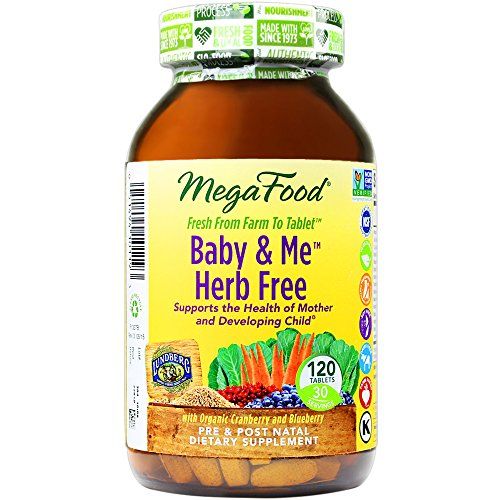
— It is desirable to keep breast milk or formula in the diet of a child up to a year, — says Anna Levadnaya. - After a year, it is better to leave the bottle completely, gradually reducing the amount of the mixture. After a year, preferably closer to one and a half, cow's milk can be offered if the child is not allergic to its protein. Breastfeeding can be continued as long as it brings pleasure to mother and child.
How to prepare the first complementary foods
Give canned puree and baby cereals or cook it yourself? This question worries many mothers.
“In fact, there is no universal advice here,” says Anna Levadnaya. - Do what is comfortable and best for you. But when choosing food, remember that you must be confident in the products you buy. If you are not sure, buy canned purees, industrial baby cereals. The main advantage of any industrial baby food is that the products from which it is made are tested for the content of pesticides, heavy metals, nitrates and other harmful substances (labeled up to 3 years).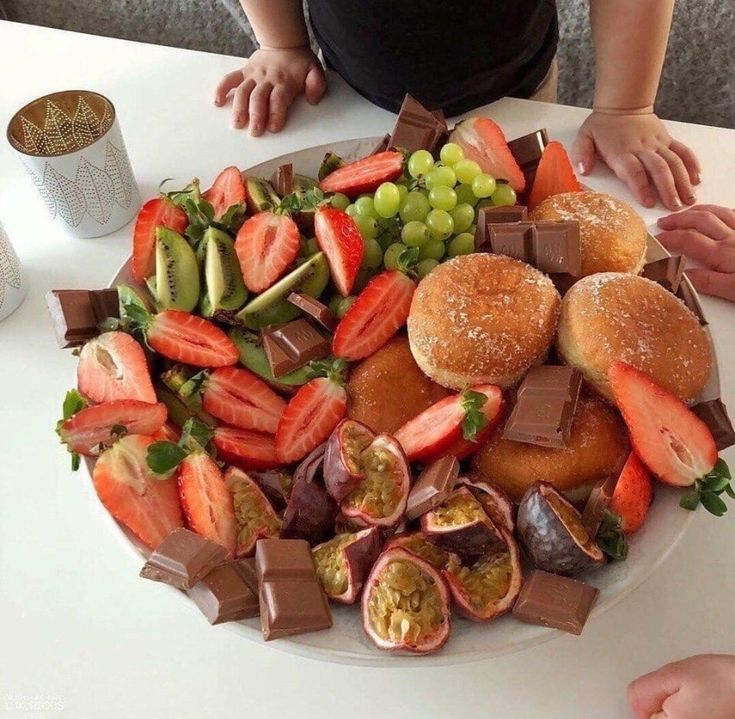 If you're cooking yourself, cook with either seasonal fruits and vegetables or frozen ones. It is best to do it for a couple - this is how most vitamins and minerals are preserved. The advantage of homemade products is that we can provide the child with a different consistency, which is very important. But in any case, choose what is more convenient for you, more comfortable, including financially. The main principle is to provide the baby with a varied diet. Alternate between different foods.
If you're cooking yourself, cook with either seasonal fruits and vegetables or frozen ones. It is best to do it for a couple - this is how most vitamins and minerals are preserved. The advantage of homemade products is that we can provide the child with a different consistency, which is very important. But in any case, choose what is more convenient for you, more comfortable, including financially. The main principle is to provide the baby with a varied diet. Alternate between different foods.
If you decide to cook yourself, follow our tips on how to prepare puree and porridge for the first meal.
Vegetable puree
Zucchini, broccoli, cauliflower, carrots, pumpkin are suitable for the first feeding. The vegetable should be fresh, without dark spots. We clean it from the peel, boil or steam it. Then we pass through a blender. The vegetable should be quite soft to get the most uniform consistency (if necessary, you can add a little boiled water).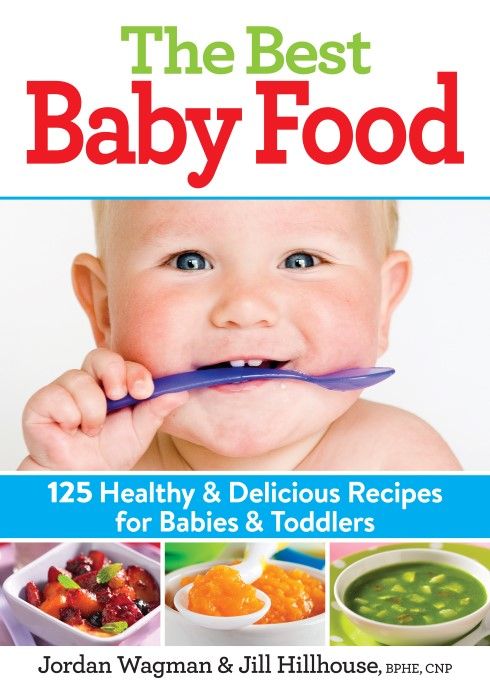 If it did not work out, then additionally the mass can be rubbed through a fine sieve.
If it did not work out, then additionally the mass can be rubbed through a fine sieve.
Fruit puree
To prepare fruit puree for your baby, such as apple or pear puree, fruit must first be baked in the oven, then peeled and passed through a blender or sieve to obtain the most homogeneous consistency. Choose fresh, ripe, seasonal fruits.
Porridges
Soak groats (for the first feeding, remember, this is rice, buckwheat, corn) for 4-5 hours in warm water. Then dry, for example, in a preheated oven. Next, grind the porridge in a coffee grinder into the consistency of flour and cook in water until cooked, this is about 5 minutes. For one tablespoon you need about 50-70 ml of water.
The main mistakes of parents
In fact, there is nothing complicated in the management of complementary foods. Use the guidelines, common sense, and have fun introducing your little one to new foods. With Anna Levadna, we have compiled a list of mistakes that parents often make when introducing complementary foods.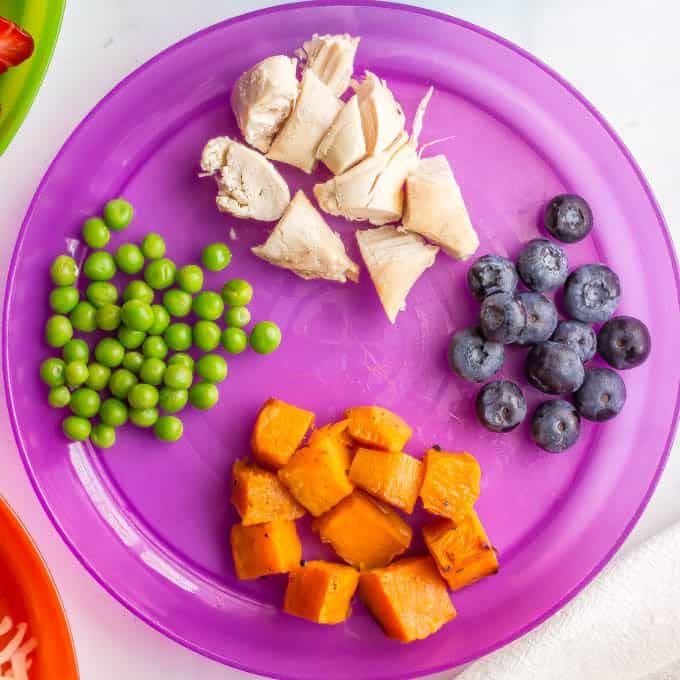 Try to avoid them.
Try to avoid them.
In a hurry
It often happens that a child refuses the first complementary foods. Most often, this suggests that the baby is simply not ready for it yet. And the parents, by hook or by crook, are trying to feed him mashed potatoes or porridge. Under no circumstances should you force-feed your baby. It is worth postponing the introduction of complementary foods for one to two weeks.
Give mashed food from a bottle
Do not do this because the child must learn to eat liquid and solid food separately.
Salt or sugar is added
These components are not recommended to be introduced into complementary foods for a child under one year old, sugar is better up to three years old.
Only the bottle is used for too long
For example, in addition to formula, if the child is on IV, they give water, compote and other drinks from the bottle. The danger is that long-term use of the bottle can reduce the child's desire to eat complementary foods and malocclusion, as well as lead to speech delay and swallowing problems.